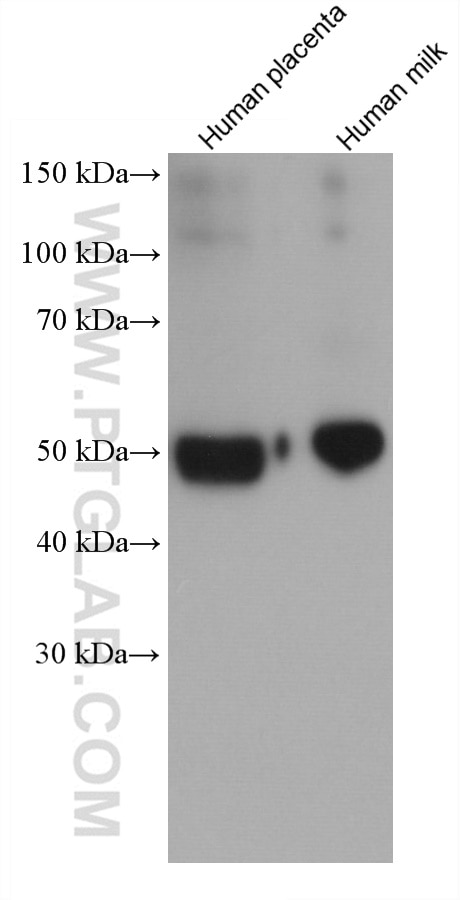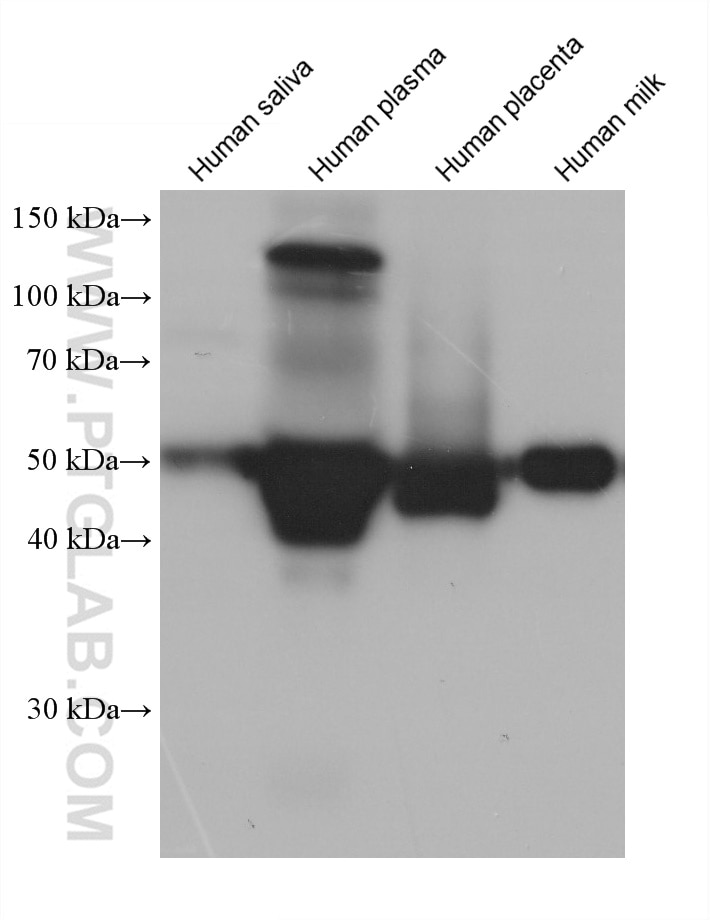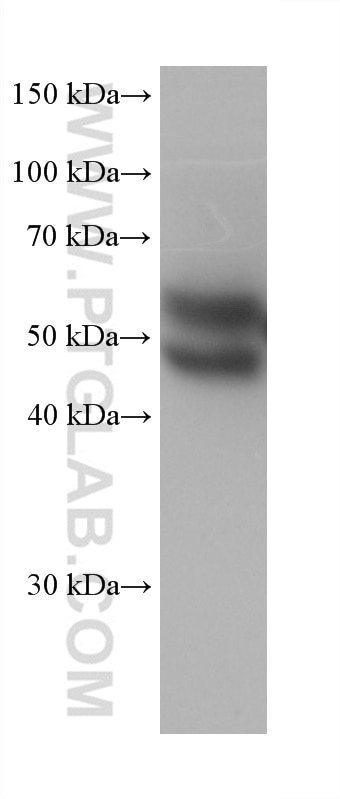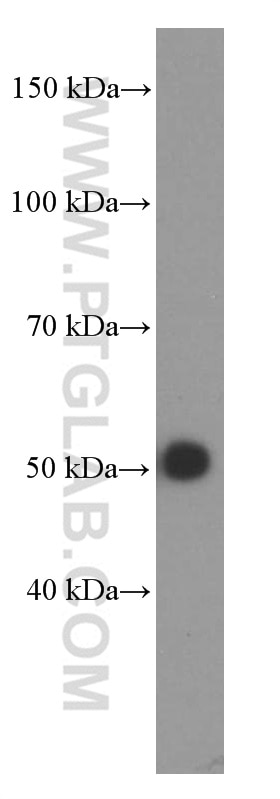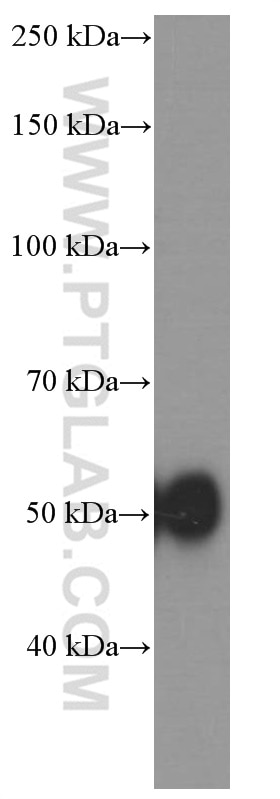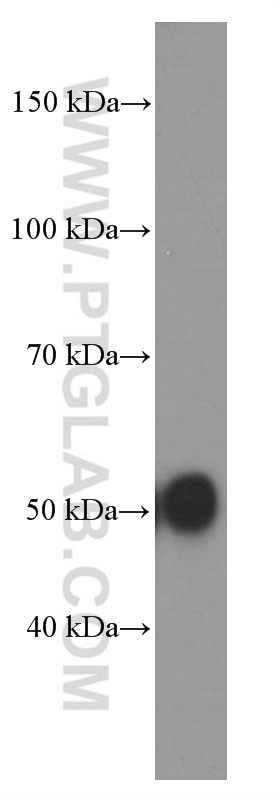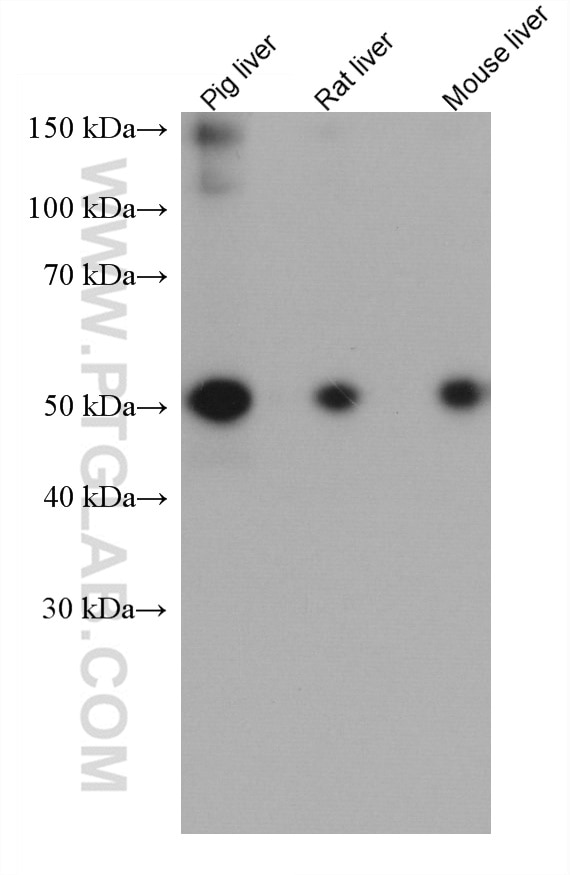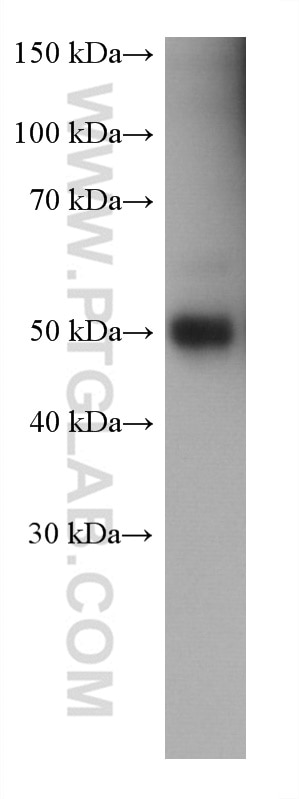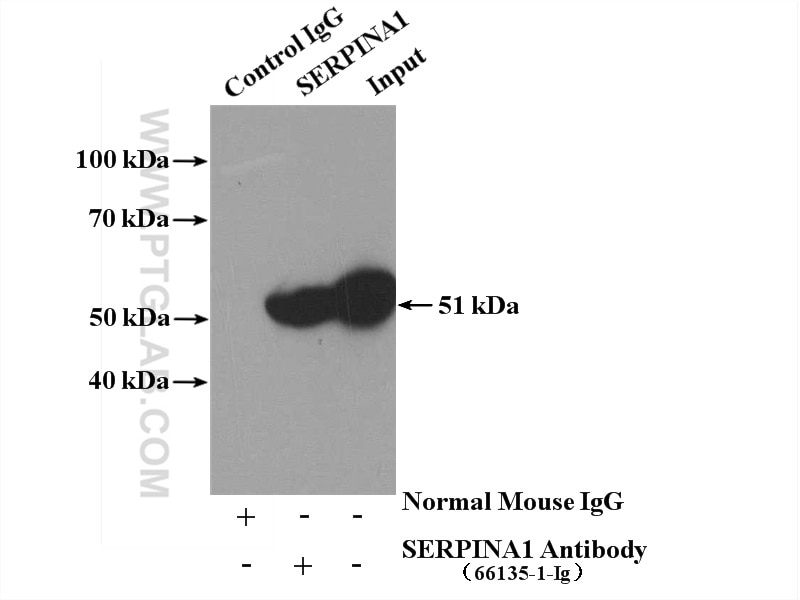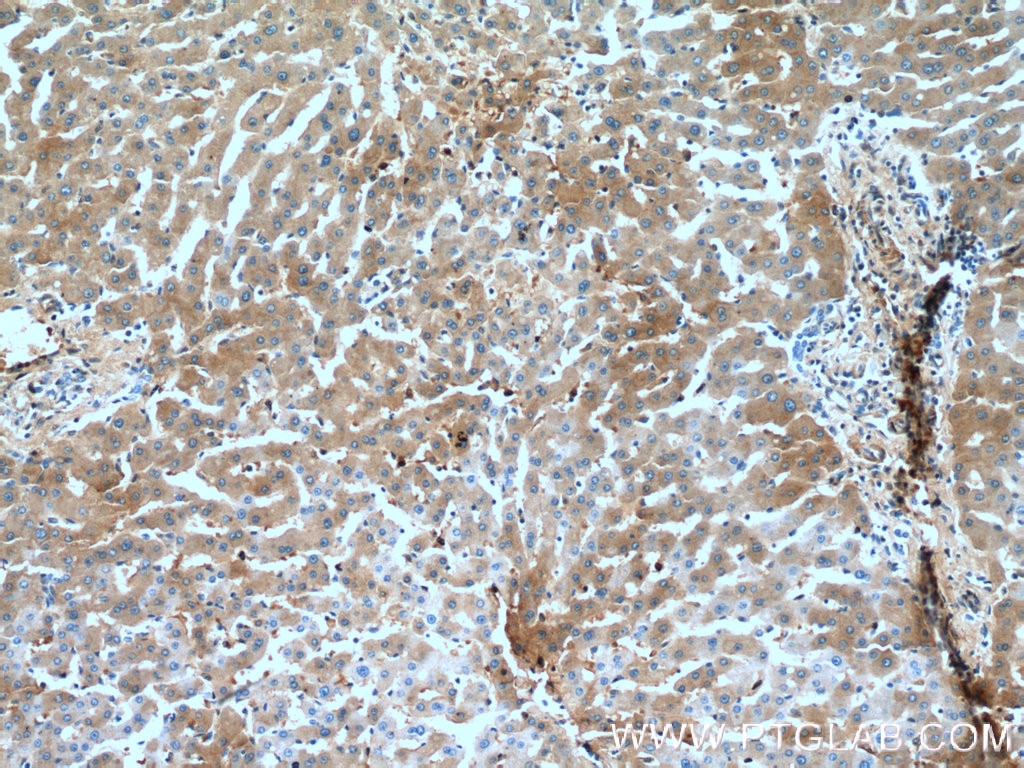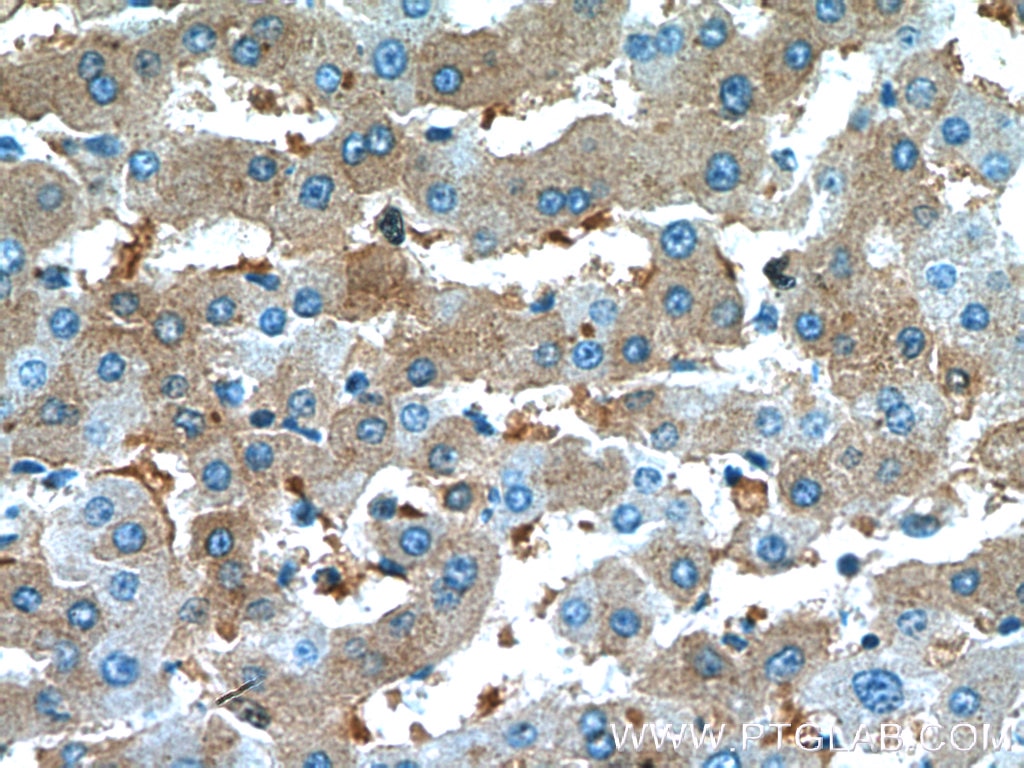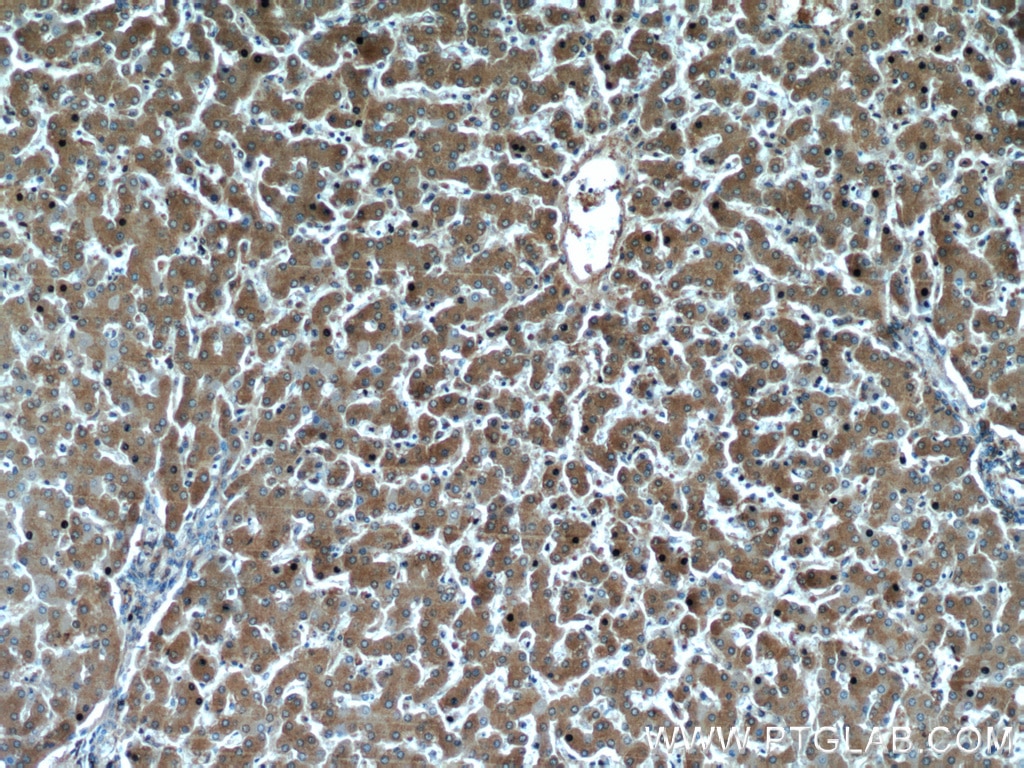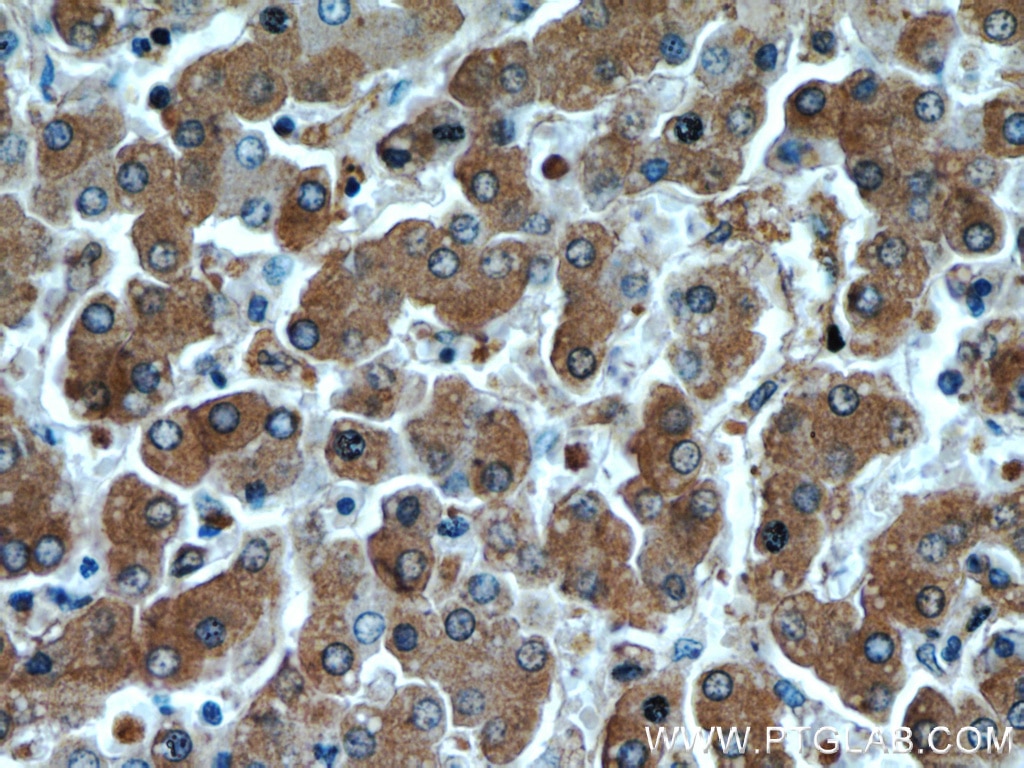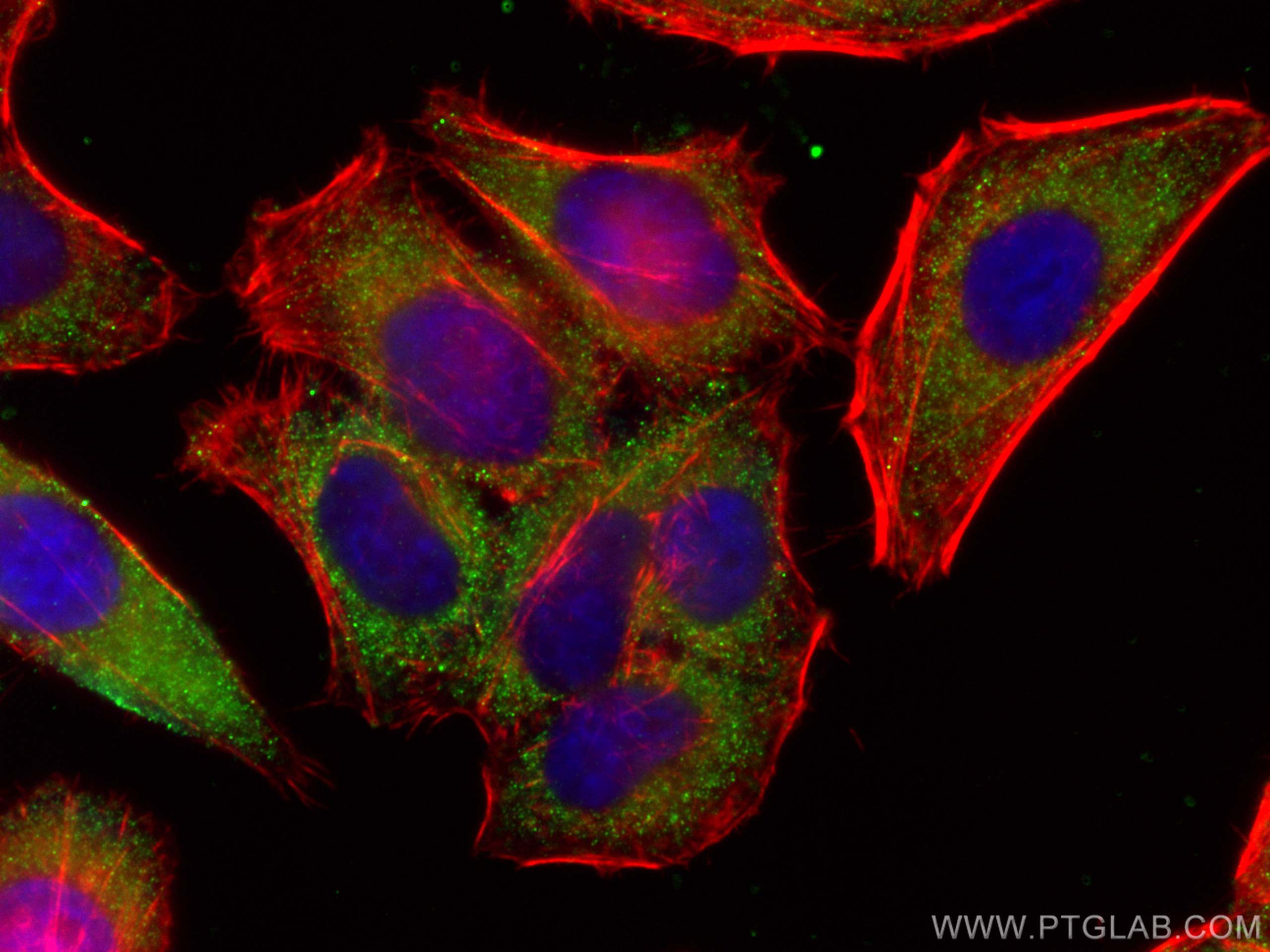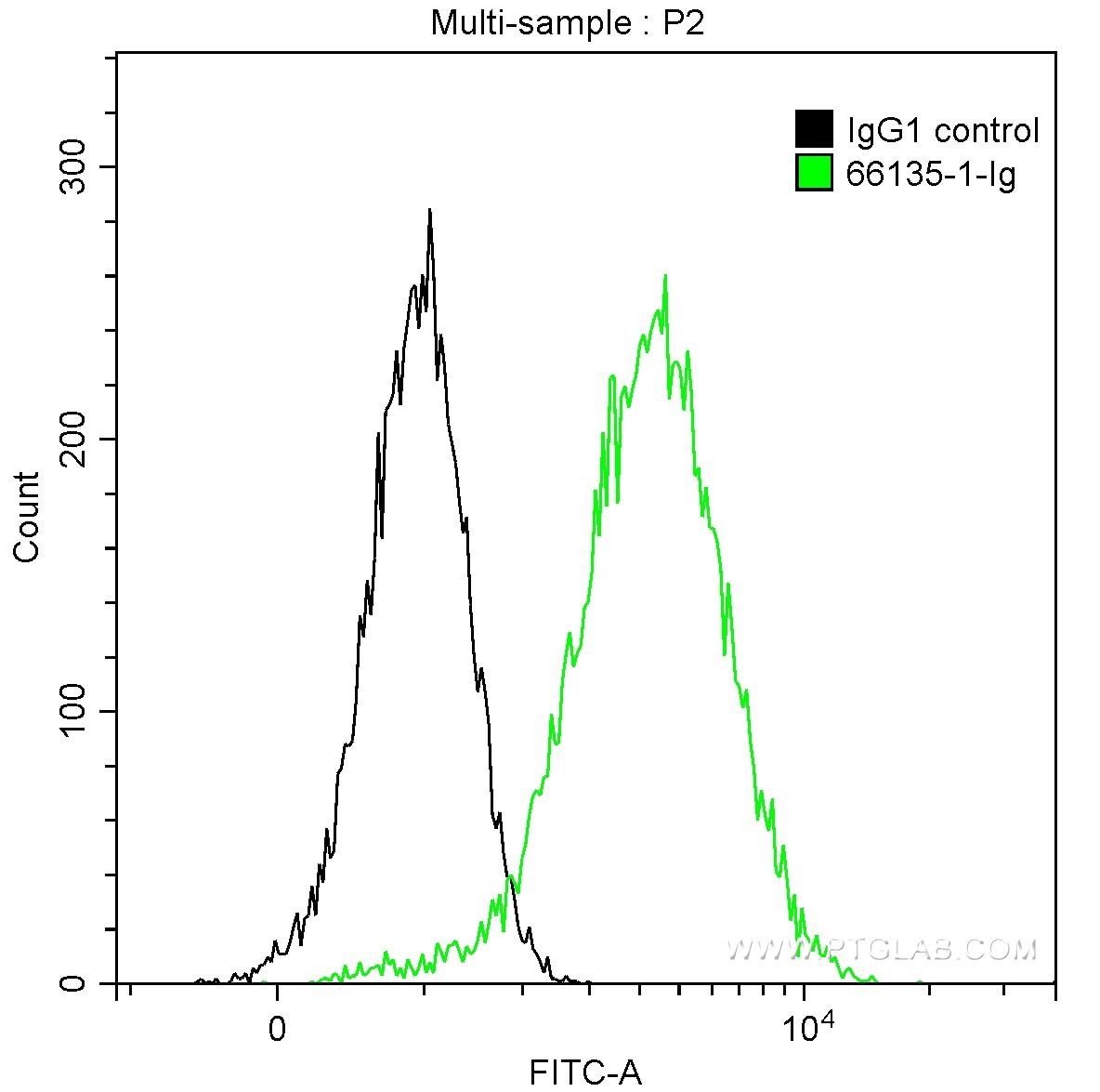Anticorps Monoclonal anti-Alpha 1 Antitrypsin
Alpha 1 Antitrypsin Monoclonal Antibody for FC, IF, IHC, IP, WB, ELISA
Hôte / Isotype
Mouse / IgG1
Réactivité testée
Humain, porc, rat, souris
Applications
WB, IP, IHC, IF, FC, ELISA
Conjugaison
Non conjugué
CloneNo.
1A9G6
N° de cat : 66135-1-Ig
Synonymes
Galerie de données de validation
Applications testées
| Résultats positifs en WB | tissu placentaire humain, cellules HepG2, cellules L02, lait humain, placenta humain, plasma humain, salive humain, salive humaine, tissu hépatique de porc, tissu hépatique de rat, tissu hépatique de souris |
| Résultats positifs en IP | tissu plasmatique humain |
| Résultats positifs en IHC | tissu hépatique humain il est suggéré de démasquer l'antigène avec un tampon de TE buffer pH 9.0; (*) À défaut, 'le démasquage de l'antigène peut être 'effectué avec un tampon citrate pH 6,0. |
| Résultats positifs en IF | cellules HepG2, |
| Résultats positifs en cytométrie | cellules HepG2, |
Dilution recommandée
| Application | Dilution |
|---|---|
| Western Blot (WB) | WB : 1:5000-1:50000 |
| Immunoprécipitation (IP) | IP : 0.5-4.0 ug for 1.0-3.0 mg of total protein lysate |
| Immunohistochimie (IHC) | IHC : 1:500-1:1000 |
| Immunofluorescence (IF) | IF : 1:50-1:500 |
| Flow Cytometry (FC) | FC : 0.20 ug per 10^6 cells in a 100 µl suspension |
| It is recommended that this reagent should be titrated in each testing system to obtain optimal results. | |
| Sample-dependent, check data in validation data gallery | |
Applications publiées
| WB | See 4 publications below |
| IHC | See 1 publications below |
| IF | See 3 publications below |
Informations sur le produit
66135-1-Ig cible Alpha 1 Antitrypsin dans les applications de WB, IP, IHC, IF, FC, ELISA et montre une réactivité avec des échantillons Humain, porc, rat, souris
| Réactivité | Humain, porc, rat, souris |
| Réactivité citée | rat, Humain |
| Hôte / Isotype | Mouse / IgG1 |
| Clonalité | Monoclonal |
| Type | Anticorps |
| Immunogène | Alpha 1 Antitrypsin Protéine recombinante Ag9516 |
| Nom complet | serpin peptidase inhibitor, clade A (alpha-1 antiproteinase, antitrypsin), member 1 |
| Masse moléculaire calculée | 418 aa, 47 kDa |
| Poids moléculaire observé | 51 kDa |
| Numéro d’acquisition GenBank | BC015642 |
| Symbole du gène | SERPINA1 |
| Identification du gène (NCBI) | 5265 |
| Conjugaison | Non conjugué |
| Forme | Liquide |
| Méthode de purification | Purification par protéine A |
| Tampon de stockage | PBS avec azoture de sodium à 0,02 % et glycérol à 50 % pH 7,3 |
| Conditions de stockage | Stocker à -20°C. Stable pendant un an après l'expédition. L'aliquotage n'est pas nécessaire pour le stockage à -20oC Les 20ul contiennent 0,1% de BSA. |
Informations générales
SERPINA1 is the gene for a protein called alpha-1-antitrypsin (AAT), which is a serine protease inhibitor whose targets include elastase, plasmin, thrombin, trypsin, chymotrypsin, and plasminogen activator. AAT is a glycoprotein synthesized primarily by hepatocytes, with smaller amountssynthesized by intestinal epithelial cells, neutrophils, pulmonary alveolar cells and macrophages. AAT is the most abundant, endogenous serine protease inhibitor in blood circulation and it has been implicated in regulating vital fluid phase biological events such as blood coagulation, fibrinolysis, complement activation, apoptosis, reproduction, tumor progression and inflammatory response. The primary function of AAT is thought to be the inactivation of neutrophil elastase and other endogenous serine proteases. Defects in SERPINA1 can cause emphysema or liver disease.
Protocole
| Product Specific Protocols | |
|---|---|
| WB protocol for Alpha 1 Antitrypsin antibody 66135-1-Ig | Download protocol |
| IHC protocol for Alpha 1 Antitrypsin antibody 66135-1-Ig | Download protocol |
| IF protocol for Alpha 1 Antitrypsin antibody 66135-1-Ig | Download protocol |
| IP protocol for Alpha 1 Antitrypsin antibody 66135-1-Ig | Download protocol |
| FC protocol for Alpha 1 Antitrypsin antibody 66135-1-Ig | Download protocol |
| Standard Protocols | |
|---|---|
| Click here to view our Standard Protocols |
Publications
| Species | Application | Title |
|---|---|---|
Liver Int Extensively expanded murine-induced hepatic stem cells maintain high-efficient hepatic differentiation potential for repopulation of injured livers. | ||
Biochem J LMAN1-MCFD2 complex is a cargo receptor for the ER-Golgi transport of α1-antitrypsin. | ||
Dis Markers Differential Plasma Proteins Identified via iTRAQ-Based Analysis Serve as Diagnostic Markers of Pancreatic Ductal Adenocarcinoma | ||
Ann Transl Med Functional hit 1 (FH1)-based rapid and efficient generation of functional hepatocytes from human mesenchymal stem cells: a novel strategy for hepatic differentiation. | ||
Ann Transl Med Changes in the hepatic differentiation potential of human mesenchymal stem cells aged in vitro. | ||
